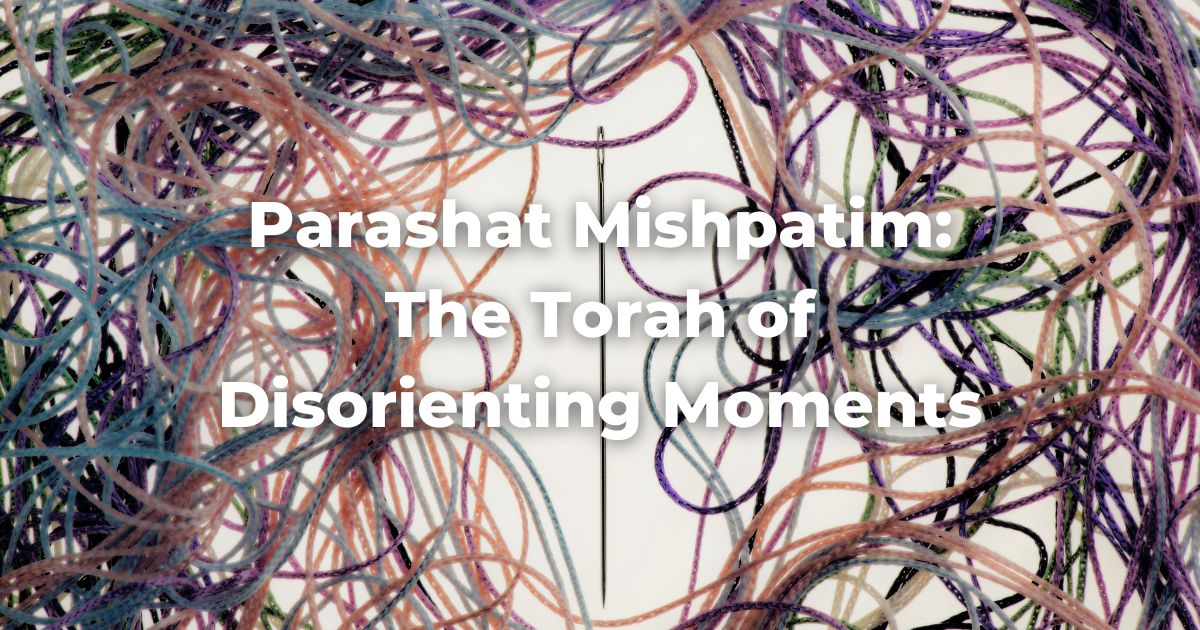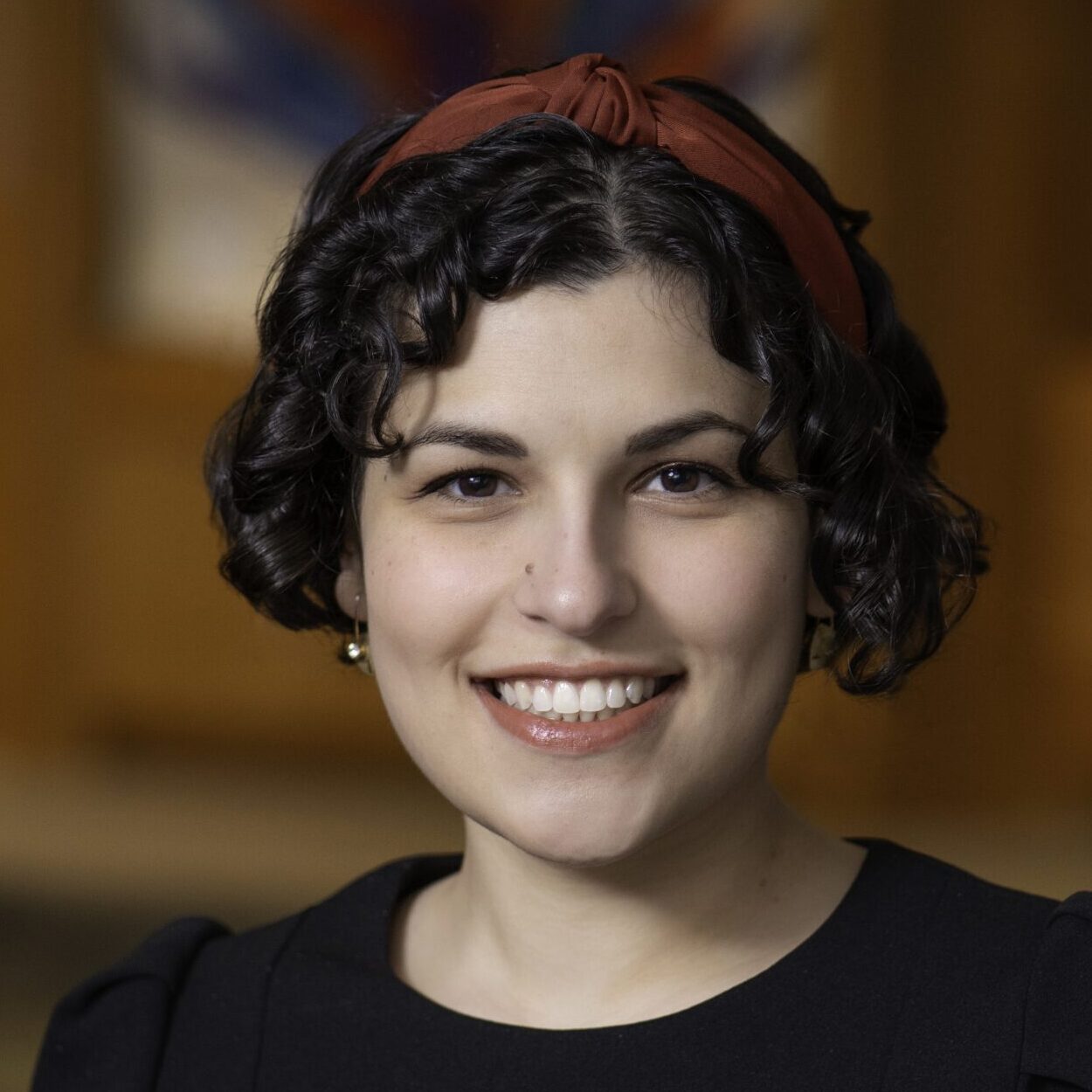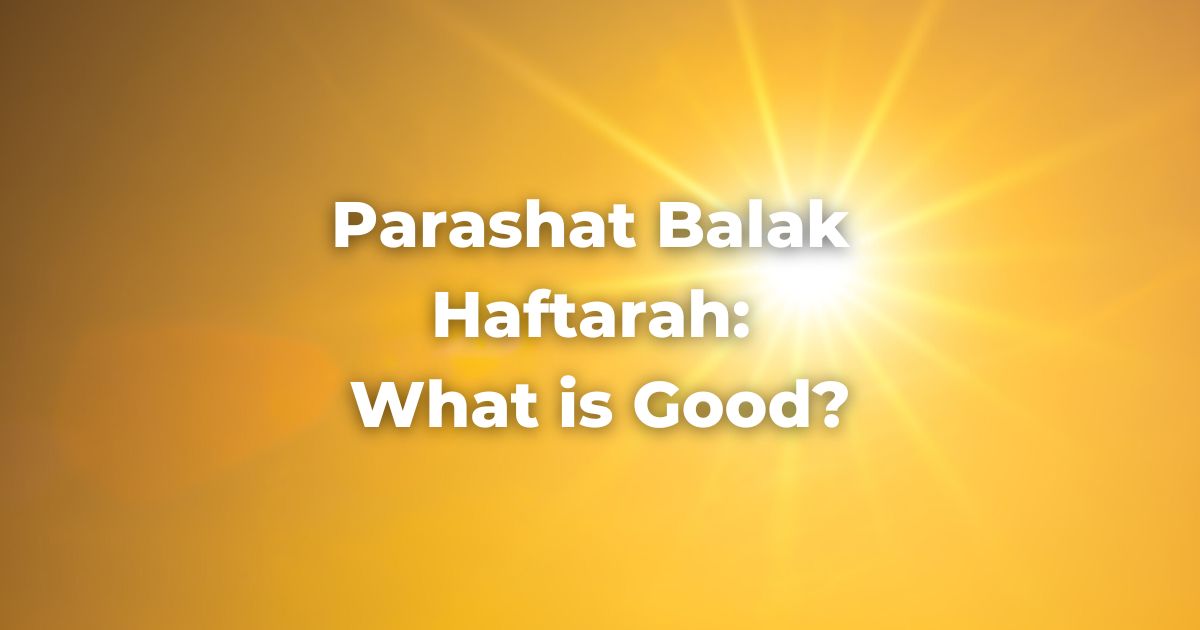Originally given as a senior sermon at JTS.
Anticipating the Future
One of my first memories of this room is from when I saw my then-roommate Cornelia give her senior sermon during my first year of rabbinical school. Cornelia and I had only just met at the start of that school year. Yet in a matter of months, she became the only person I saw for quite some time.
Coming to terms with the reality of COVID and finishing the already challenging first year of rabbinical school was difficult. When I anticipated my fifth and final year of school, I imagined the world would look very different. Perhaps calmer, even.
Well, here I am, in my last semester. Thank God, we have vaccines and improved information about the importance of clean air, masking, and other mitigation measures, but COVID is still with us; we’re coming off of yet another surge. And beyond the pandemic, the past few years have hardly been easy, with this academic year punctuated by horrific violence in Israel and Gaza. These conditions have not been what many of us anticipated or wanted.
When we find ourselves in these unexpected and, perhaps unwanted, moments, do we just look for the light at the end of the proverbial tunnel? Or, is there a different way to understand our relationship to being in the tunnel?
This week’s parsha, Mishpatim, begins with the Israelites receiving a long set of rules. וְאֵ֙לֶּה֙ הַמִּשְׁפָּטִ֔ים אֲשֶׁ֥ר תָּשִׂ֖ים לִפְנֵיהֶֽם: [God said to Moses] and these are the rules you should place before them. Medieval commenators took note of the fact that the first word, וְאֵ֙לֶּה֙, begins with a conjunction, implying a connection between this week’s and last week’s parasha.
For that reason, Rashi suggests that we are picking up where we left off in Yitro, the moment of Matan TorahRefers to the first five books of the Hebrew Bible, the Tanakh, also called the Five Books of Moses, Pentateuch or the Hebrew equivalent, Humash. This is also called the Written Torah. The term may also refer to teachings that expound on Jewish tradition. Read more, rather than transitioning to some other story about legal transmission. Just as the Ten Commandments were given at Har Sinai, so too were the rulings about human interactions detailed this week. Parshat Mishpatim is a direct continuation of revelation.
In a famous rabbinic interpretation of the moment when the Israelites receive the Torah, the Talmudic sage Rav Avdimi bar Hama bar Hasa said, “The Holy One inverted Mount Sinai and held it over the Israelites כְּגִיגִית, like a tub, or barrel, and said, receive the Torah, or here will become your grave.”
Receive Torah, and live; or die here, under the mountain.
The image of the Israelites literally standing under the mountain gives the rabbis of the TalmudReferring to one of two collections, the Jerusalem and Babylonian Talmuds, edited in the 6th century, that contains hundreds of years of commentary, discussion, and exploration of the ideas in the Mishnah. One could describe it as Mishnah + Gemara = Talmud Read more, particularly Rav Aha bar Yaakov, tremendous pause. Wouldn’t this mean that the Israelites accepted the Torah under duress? And if so, wouldn’t that undermine the very authority of Torah?
Rather than seeking a solution in the story of Sinai itself, the rabbis fast-forward to the Purim story. According to the ninth chapter of Megillat Esther, after the Jews successfully fought for their lives against Haman and his collaborators, they voluntarily accepted the commitment to celebrate Purim every year.
The Babylonian sage Rava picks up on the language of this passage in the Megillah—קִיְּמוּ וְקִבְּלוּ הַיְּהוּדִים, the Jews confirmed, or reestablished, and recieved the observance of Purim—and Rava transposes it to the context of revelation. He teaches that, in the days of Ahasuerus, the Persian Jews actually accepted not only the obligation to observe Purim but also recommitted themselves to the entire Torah. קִיְּימוּ מַה שֶּׁקִּיבְּלוּ כְּבָר, he explains—the Persian Jews affirmed, or established, what they had already received, meaning at Sinai.
Thus, the difficulty with har k’gigit is ostensibly resolved: Had we been concerned that the Children of Israel were forced to accept the Torah at Sinai, we could rest easy knowing that, later, the Jews re-accepted the Torah of their own free will.
Ever since I first encountered it, this “resolution” struck me as a bit odd.
While kimu v’kiblu was not an explicitly coerced response like the moment of har k’gigit, both acceptances occurred during or immediately following moments of profound disorientation and vulnerability.
At Sinai, the Israelites were given a choice between Torah and death, says the midrashThis word is used in two ways, as both a concept and a literature. As a concept, midrash is the expansive interpretation of biblical texts. The term is used to describe the practice of rabbinic interpretation. As a text, it refers to specific collections of interpretations, particularly from the third to ninth centuries in the Land of Israel and Babylonia. Plural: Midrashim
Read more. The moment in the Purim story when the Jews utter kimu v’kiblu comes after they have been saved from death, but not by much. I have to imagine that the fear, disorientation, and perhaps even trauma of the Jews’ encounter with Haman and his collaborators had not yet dissipated.
To accept God’s Torah after enduring such an ordeal is barely more a free choice than accepting it to avoid getting squashed by a mountain. The Torah of both Sinai and Shushan was received—and affirmed—in contexts of extreme external pressure.
We can learn from how the rabbis connected revelation to these two destabilizing experiences that there is a direct relationship between moments of disorientation and receiving Torah. What if we understood kimu v’kiblu not as a tikun, or a repair, to one of the midrashic understandings of Sinai, but rather as a testament to what it means to accept and live out Torah in our frequently uncertain and tumultuous
world?
Taking on this relationship to Torah and the world around us necessitates, first and foremost, paying attention to the here and now, even in difficult moments.
Remember—God does not give the Torah at the end of forty years of wandering in the wilderness, but in the midst of it; not at the top of a mountain but underneath it; not at the peak of our power but in a moment of vulnerability. If we do not stay present, remaining open to the possibility of revelation, we risk missing the unique Torah these experiences offer.
What do I mean by “unique Torah”?
What about the Torah, the one that has been passed from generation to generation, from Sinai to Shushan to here in the Women’s League Seminary Synagogue at JTS today? From a certain perspective, of course there is “capital T” Torah. Yet how we receive, understand, and live out this Torah is informed by our particular circumstances.
For example, the Torah the Israelites hear, and to which they commit themselves, after the experiences of enslavement, liberation, and (according to our sages) near-death under Mt. Sinai, is, fittingly, about interpersonal and communal justice—how to create an equitable and life-giving society on the other side of enslavement.
The Torah the Persian Jews receive, and to which they commit themselves after overcoming persecution, is about not leaving everything up to God, and also realizing God is with us even when seemingly hidden.
And the Torah that I have received over the past five years, including how I understand the interplay between Sinai and Shushan, is similarly informed by and inseparable from what I have lived through.
I chose to come to JTS craving and expecting deep Talmud Torah in the form of many hours in the beit midrashLiterally, “house of study,” it refers to a school or a communal study hall. Plural: Batei Midrash Read more.
By senior spring, I would be able to tackle a Tosafot, no longer agonize over Aramaic, you get the picture. I even planned to have a Masters in Talmud to show for it. Yet as courses went virtual, classmates came and went, and less time was allotted for skill building, I came to the realization that I might not be able to learn rabbinic texts in the way I had envisioned, at least not in that particular moment.
I spent a lot of time angry, sad, and even grieving over the loss of an experience I had envisioned for myself. But I was not just going to focus on getting to the other side of school, to ordination. Instead, I began to look for Torah in new ways. One professor suggested choosing a masters that allowed me to study Talmud in a manner better suited to my reality at the time. So, I pursued a gender studies MA with a focus in rabbinics.
As I began opening to the idea that my rabbinic education might have different contours than the ones I had envisioned, I encountered other revelatory moments: prioritizing interpersonal relationships, pursuing additional hospital rotations as a chaplain, and permitting the challenges and joys in my personal life to be teachers, as well.
The Torah we can receive in our moments of disorientation may not be the Torah we wanted, or thought we needed, but it is deeply important. Yet, as exemplified at Sinai and in Shushan, and as I learned during my years at JTS, Matan Torah is not passive. We must make space for the grief, fear, and anxiety of destabilizing times, rather than ignoring these feelings or becoming consumed by them. Then, perhaps, we can experience the revelatory dimensions of these moments.
In doing so, we can become present to profound truths.
One Hasidic teacher, Rabbi Tzadok HaKohen, even went so far as to say that the true miracle of Purim was as follows: the Jews of Shushan, precisely when they were downtrodden, were able to realize that it was a moment of divine concealment. They took action—crying out, fasting, and so forth—and their mourning turned to joy.
If we follow this line of thinking, the Jews would not have even had their kimu v’kiblu moment had they not been honest with themselves about the depths of their despair. Torah is available to each of us, and in every moment, no matter what we may be going through. The challenge for us is to recognize and grasp onto it.
After Sinai came Shushan, and after our current moment of disorientation, we will likely encounter another … and another … and another. The reality of our world is that there will always be tumultuous days ahead. But as Rabbi Ferris Bueller once said, “Life moves pretty fast. If you don’t stop and look around once in a while, you could miss it.”
Trying to get through difficult times as quickly as possible is a very human tendency. But if we can allow ourselves to slow down and meet the moment, then we won’t miss the Torah that life reveals.
May we stay present, receptive to the possibility of revelation, even and especially when it’s hard. May we merit to receive the Torah that we, and our world, so urgently need.
Author
-

Talia Kaplan serves as a rabbi at Congregation Beth Shalom in Overland Park, Kansas. Informed by chaplaincy and organizing, she takes a relational, empathetic approach to communal leadership. In partnership with organizations like UN Women, NCJW, and the CJLS, Rabbi Kaplan has written, spoken, and created educational resources—her favorite topics being the intersection of Judaism and justice and the interplay between gender and ritual. Rabbi Kaplan holds a BA from Wesleyan University and will receive rabbinic ordination, an MA in Jewish Gender and Women's Studies, and a Certificate in Pastoral Care and Counseling from the Jewish Theological Seminary in May 2024.
View all posts






